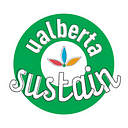Student’s ingenuity saves thousands of litres of water in chemistry labs
DIY system designed and built for the University of Alberta’s Campus Saint-Jean.
Originally published May 12, 2016.
In 2015, Campus Saint-Jean undergraduate student Alex Schoeddert found a new way to reduce water waste in his campus’ chemistry labs. Working with Sarah Pelletier (faculty service officer) and Keshwaree Vima Babooram (faculty service officer and chemistry professor), Schoeddert built a water recycling system that will save up to 7,200 litres of water each year. This initiative helped the Campus Saint-Jean teaching labs win a Campus Sustainability Leadership Award in April 2016.
Can you tell us a bit about the water recycling system?
It was Vima and Sarah’s idea to try and put this in as part of a summer project I was doing with the Centre for Teaching and Learning. Basically, whenever we’re doing reactions with a condenser apparatus, it requires a lot of water. We did a few tests at the beginning, and it worked out to about 600 litres of water being used per experiment when the students are in the lab. Our calculations ended up being about two litres a minute per group, and we usually have about 12 groups in the lab.
So now we have a tank at the top that stores our water, and then it’s piped down to the four stations per lab bench. They have the inflow of water to their system, and then they have their outflow, which flows back along the lab bench from the four stations and is collected underneath. There’s then a float switch that is triggered when the water level reaches a certain point. That turns on the pump, which then sends the water back up to the top to restart.
What was your motivation for this project?
The idea to do something initially came from Vima and Sarah. The labs are run by green-minded people, so things like that water waste really bug you — just watching that water go to waste during every single lab. There’s got to be a better way to do it. If we can start showing that it can be done with less water or with recycling, then maybe other people can adopt that as well. We can start kind of moving towards an attitude of sustainability.
How did you come up with this design?
I wanted to have something that was more gravity-fed, because I didn’t want to pressurize lines and we could use less energy if it was gravity-fed. I started just by testing with a carafe of water that we use for washing and things like that. I stuck one of those on top of a couple boxes and just saw if it had enough pressure to flow through, and then we went to this idea of being able to build the circuits on top of the lab benches. So we built one and tested it and found that it worked.
How much time did it take to actually build once you figured out what you needed?
It took about two days per lab bench to get all the material in place. But that was only me doing it, so it would probably be less time if there were a team working on it. It took many trips to Rona, including a few by bike. That was fun!
So it’s extra sustainable! It was pedal powered.
It was pedal powered. I did most of the woodwork and stuff in my garage, so I was bringing stuff back and forth by bike from there as well.
How have the lab users responded to this new tech you’ve developed?
They seem to all like it. After it was built, we got a few students to come in and kind of try and break it so that I could see how students would use it and if it was clear to them what they needed to do. That helped us with our instructional materials afterwards.
We’ve had a few little growing pains with the temperature of the water, and we had one incident where one of the return tubes came out of the bin, but we found what was going wrong and we fixed it.
It was a lot of work to build, but it was kind of just a step-by-step process. It was all fairly cheap to build, so it can be easily done by other people, hopefully.
What are some other green features of your lab?
We keep the temperature lower. We’ve turned the thermostat down, and it probably allows us to use less ice to get the water temperature down. We worked this summer on changing over experiments to use greener solvents, so we got rid of dichloromethane in three experiments and then there’s two more that are scheduled to launch next winter. We did a lab looking at green extraction techniques with liquid CO2. We have some modifications to make, but it sort of went well.
For anyone else looking to get into doing more stuff within their lab to make it green, to make it sustainable, what advice do you have for them?
Do it. That would be the first piece of advice. Definitely get involved. Do things like talk to the Green Labs Leaders Network. The Green Spaces for labs checklist gives you some ideas. When I was going through the Green Spaces certification, they had some suggestions of innovative projects, or projects that were already being done in other labs, so you can see if those can come into your lab.
Even do those things that are the small, like making sure you have a recycling bin. That sounds simple and easy, but those small steps can make a huge impact.
This interview has been edited for length and clarity. Written by Angela Johnston and Kateryna Barnes for the University of Alberta’s Office of Sustainability.
